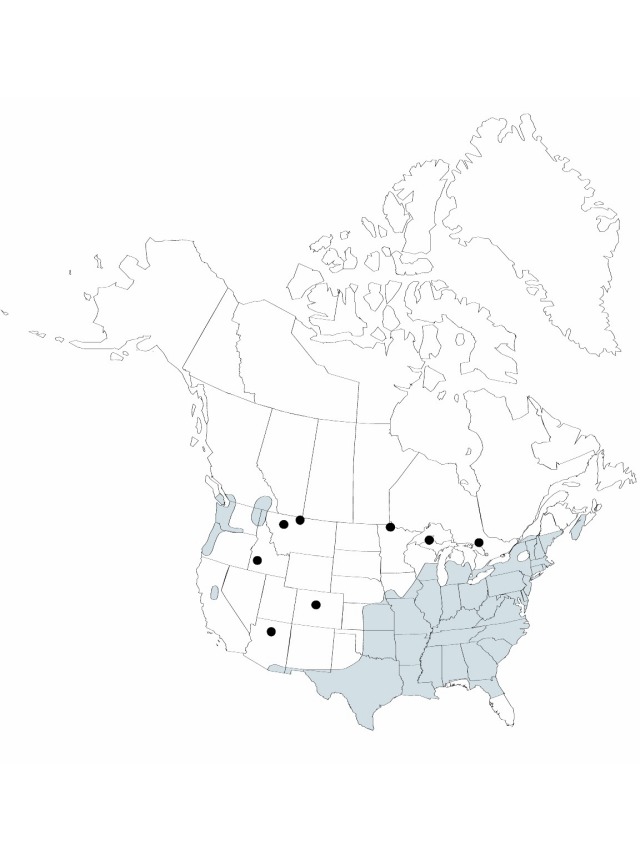Juncus acuminatus
Flora Boreali-Americana 1: 192. 1803.
Herbs, perennial, cespitose, not rhizomatous, 1.4–10 dm. Culms erect, terete, 1–3 mm diam., smooth. Cataphylls 1–2, gray, apex acute. Leaves: basal 1–2, cauline 1–2; auricles 1–1.5 mm, apex rounded, scarious; blade green, straw-colored, or pink, nearly terete, 1–40 cm. Inflorescences terminal panicles of 5–50 heads, 5–15 cm, branches ascending; primary bract erect; heads (2–) 5–20 (–50) -flowered, hemispheric (to spheric), 3–10 mm diam. Flowers: tepals light-brown to greenish, lanceolate, 2.6–3.5 (–3.9) mm, apex acuminate; stamens 3 (or 6), anthers 1/3 filament length. Capsules equaling perianth or slightly exserted, straw-colored, 1-locular, ellipsoid to narrowly ovoid, 2.8–3.5 (–4) mm, apex acute, valves separating at dehiscence, fertile throughout or only proximal to middle. Seeds ellipsoid to oblong, 0.3–0.4 mm, not tailed; body clear yellowbrown. 2n = 40.
Phenology: Fruiting early summer–fall.
Habitat: Shores, swamps, ditches, springs, wet meadows, and rock outcrops
Elevation: 0–2200 m
Distribution

B.C., N.S., Ont., Que., Ala., Ariz., Ark., Calif., Colo., Conn., Del., D.C., Fla., Ga., Idaho, Ill., Ind., Iowa, Kans., Ky., La., Maine, Md., Mass., Mich., Minn., Miss., Mo., Mont., Nebr., N.H., N.J., N.Mex., N.Y., N.C., Ohio., Okla., Oreg., Pa., R.I., S.C., Tenn., Tex., Vt., Va., Wash., W.Va., Wis., Mexico, Central America (Honduras)
Discussion
Selected References
None.
